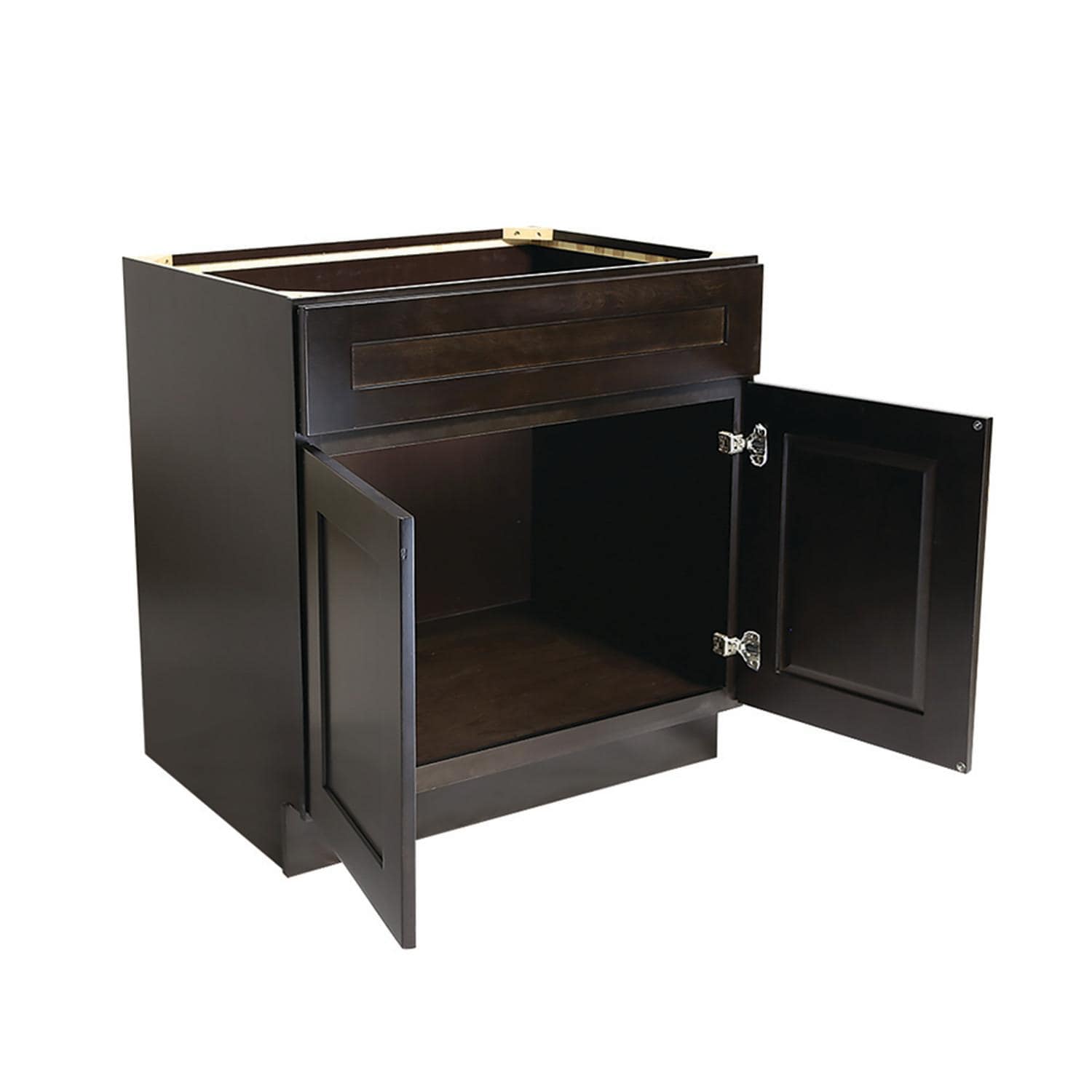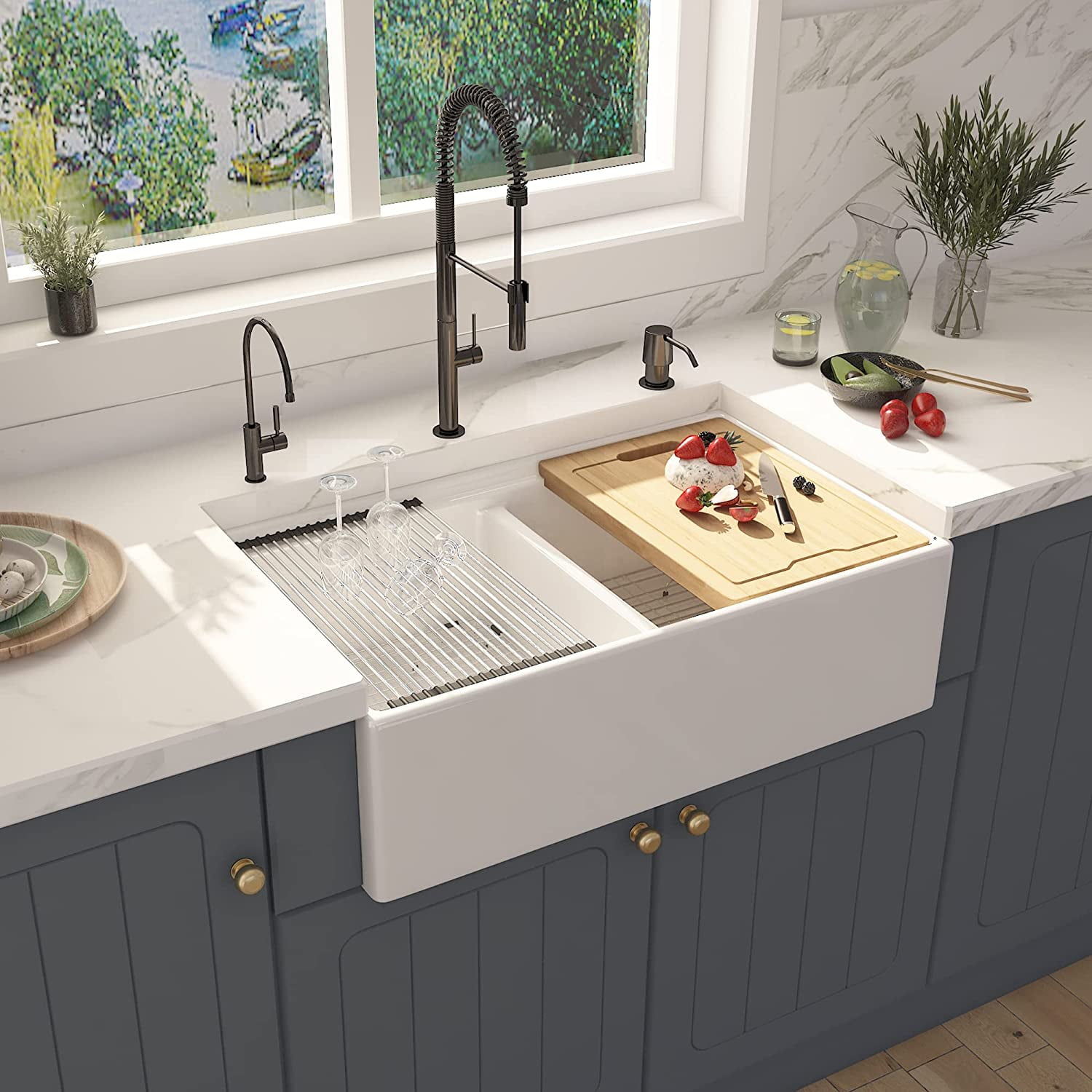Defining the Terms

A base cabinet is a fundamental component of kitchen design, providing essential storage and functionality. It is a freestanding unit that typically sits on the floor and offers a platform for countertops and appliances.
Defining the Sink Base Cabinet
A sink base cabinet, as the name suggests, is a specialized type of base cabinet designed to accommodate a kitchen sink. It features a unique construction to support the weight and plumbing of the sink. This type of cabinet typically has an open space below the countertop where the sink is installed, along with plumbing access and waste disposal systems.
Functionality of a Base Cabinet and a Sink Base Cabinet
The primary function of a regular base cabinet is to provide storage for kitchen items like dishes, cookware, and utensils. They are often equipped with drawers, shelves, or a combination of both to maximize storage capacity.
A sink base cabinet, on the other hand, serves a dual purpose: storage and sink installation.
While it offers storage space like a regular base cabinet, its primary function is to support the sink and provide plumbing access. The sink base cabinet often has specific features to accommodate the sink’s plumbing and waste disposal, including a dedicated space for the garbage disposal unit and plumbing access panels.
Construction and Design: Difference Between Sink Base Cabinet And Base Cabinet

Both sink base cabinets and regular base cabinets are essential components of a kitchen, but their construction and design differ significantly due to their unique functions. Sink base cabinets are specifically designed to accommodate a kitchen sink and its plumbing, while regular base cabinets provide storage for various kitchen items.
Construction Materials
The materials used for constructing both types of cabinets can vary depending on their quality and price point. However, some common materials include:
- Cabinet Boxes: The frame of the cabinet, known as the cabinet box, is typically made of plywood, particleboard, or medium-density fiberboard (MDF). Plywood is the most durable and moisture-resistant option, while particleboard and MDF are more affordable but less durable.
- Cabinet Doors and Drawers: These components are often made of wood, laminate, or painted MDF. Solid wood doors and drawers offer a premium look and feel, while laminate and painted MDF are more budget-friendly options.
- Hardware: Cabinet hinges, drawer slides, knobs, and pulls are essential components that contribute to the functionality and aesthetics of the cabinet. They are available in various materials, finishes, and styles.
Design Elements
The key design elements that distinguish a sink base cabinet from a regular base cabinet include:
- Sink Cutout: Sink base cabinets feature a cutout in the countertop and cabinet box to accommodate the kitchen sink. This cutout is typically designed to fit the specific sink model chosen for the kitchen.
- Plumbing Access: Sink base cabinets are equipped with access panels or openings to allow for easy installation and maintenance of plumbing pipes and fixtures.
- Storage Configuration: Sink base cabinets often have a smaller storage capacity compared to regular base cabinets due to the sink cutout and plumbing access. They may feature a single large drawer, multiple smaller drawers, or a combination of drawers and shelves.
Sink Base Cabinet Styles
Sink base cabinets are available in a variety of styles to suit different kitchen layouts and aesthetics. Some popular styles include:
- Single-Bowl Sink Base Cabinet: This style features a single large cutout for a single-bowl sink. It is a common choice for smaller kitchens or those with a single primary sink.
- Double-Bowl Sink Base Cabinet: This style accommodates a double-bowl sink, providing more workspace and separation for washing and rinsing tasks. It is suitable for larger kitchens or those with multiple users.
- Undermount Sink Base Cabinet: This style features a sink that is mounted beneath the countertop, creating a seamless and modern look. It requires a specific type of countertop material and sink design.
- Farmhouse Sink Base Cabinet: This style is characterized by a large, apron-front sink that sits on top of the countertop. It is often used in traditional or farmhouse-style kitchens.
Functionality and Features

Sink base cabinets and regular base cabinets offer distinct functionalities and features, tailored to their respective roles in a kitchen. Understanding these differences is crucial for making informed decisions when designing or renovating a kitchen.
Plumbing Connections and Waste Disposal, Difference between sink base cabinet and base cabinet
The primary distinction between a sink base cabinet and a regular base cabinet lies in the plumbing connections and waste disposal mechanisms. Sink base cabinets are specifically designed to accommodate plumbing fixtures, including faucets, drain pipes, and garbage disposals. These cabinets often feature pre-drilled holes for plumbing fixtures and may have dedicated compartments for housing plumbing components. The plumbing connections are usually concealed within the cabinet, maintaining a clean and organized look. In contrast, regular base cabinets do not typically have plumbing connections and are primarily designed for storage purposes.
Storage Capacity and Accessibility
Sink base cabinets generally have a lower storage capacity compared to regular base cabinets due to the presence of plumbing components and the sink itself. However, the storage space available in a sink base cabinet is often more accessible, as it is usually located below the countertop and is easily reachable. Regular base cabinets, on the other hand, often have greater storage capacity, but accessing items stored in the back of the cabinet can be more challenging.
Impact of Sink Size and Configuration
The size and configuration of the sink can significantly impact the design and functionality of the sink base cabinet. Larger sinks require wider cabinets to accommodate their dimensions, while smaller sinks offer more storage space. Additionally, the location of the sink, such as a corner or a center island, influences the cabinet’s design and accessibility. For instance, a corner sink base cabinet might have angled doors or drawers to optimize storage and access.
Difference between sink base cabinet and base cabinet – While both sink base cabinets and standard base cabinets provide storage, the sink base cabinet is designed to accommodate the sink and plumbing, often featuring a larger footprint and a dedicated space for the garbage disposal. When considering your kitchen layout in India, exploring the variety of wooden kitchen cabinets in India can help you envision the perfect arrangement.
From the sturdy construction of traditional teak to the contemporary elegance of mango wood, the choice of material can significantly influence the overall look and functionality of your kitchen. When choosing between sink base and regular base cabinets, remember that both play an important role in maximizing storage and creating a cohesive kitchen design.
It’s interesting to think about the difference between a sink base cabinet and a standard base cabinet, right? Both offer storage, but one is designed for a specific purpose. Much like a sink base cabinet has a dedicated function, a wooden wall liquor cabinet is a stylish and functional way to store and display your collection.
And just like a sink base cabinet needs to be sturdy to handle the weight of a sink, a base cabinet needs to be strong enough to support whatever you choose to store in it.